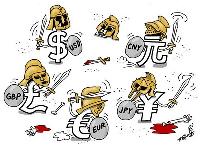
One of the leading issues related with international trade at present is the gain in exports by some countries through the manipulation of exchange rate. By keeping domestic currency undervalued, a country can increase exports and reduce imports. Undervalued currency means we have to pay more of the domestic currency to get a single unit of international currency like Dollar.
The RBI never tries to make the rupee an undervalued currency and never indulges in currency war. The example below is for understanding the concept. In India, the rupee is depreciating mainly because of high trade deficit.
Suppose that the exchange rate of rupee is Rs 60 per one US $. This is the exchange rate prevailing in the Indian foreign exchange market. Now, imagine that the RBI buys dollar from the market substantially, thereby causing high demand for dollar. As a result, the exchange rate will increase to Rs 65 or like. In this case, the rupee becomes an undervalued currency. Meaning is that the currency’s value is artificially lower, and otherwise it would have been much higher vis a vis the dollar. An undervalued currency is one whose value is lower than it ought to be.
The new exchange rate implies that now foreigners can get Rs 65 worth of commodities by spending one dollar from India compared to just Rs 60 worth of commodities previously. This will encourage India’s exports.
On the import side, previously we were paying just 60 rupees to import one dollar worth commodities. Now we have to pay Rs 65 to get a commodity whose price is one dollar in the international market. Hence, our imports will come down. Here, as a result of a smart and calculated intervention by the central bank by buying the dollar in the domestic market, our exports have increased and imports decreased, bringing trade gains.
Some other country will watch this situation and will imitate the RBI’s strategy of undervalued currency. In this way many central banks indulges in undervalued currency strategies to make gains in the trade front. This situation is called currency war. It is a situation of competitive devaluation.
*********









